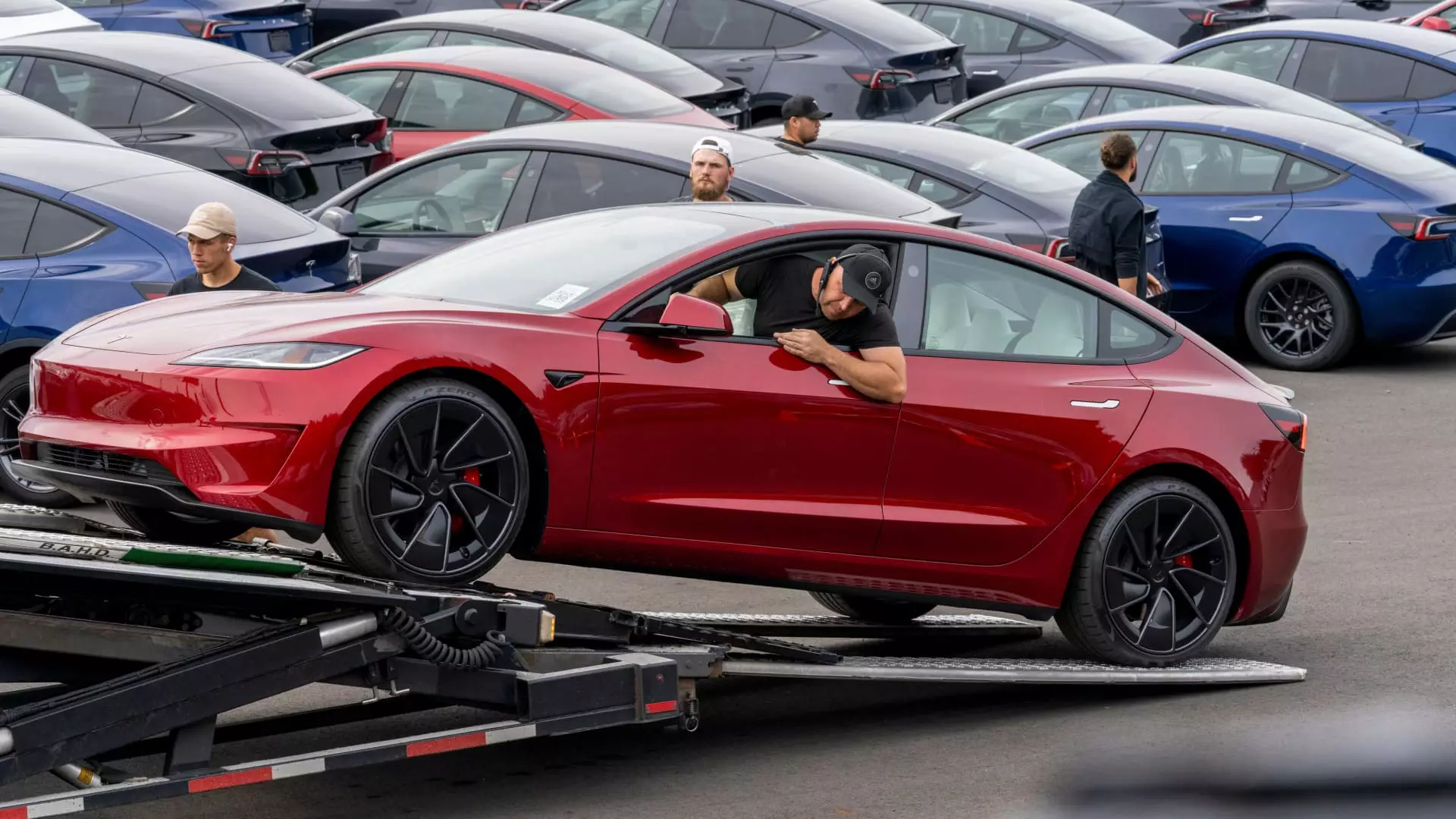In its latest quarterly report, Tesla announced its vehicle production and delivery numbers for Q3 2024, revealing a total of 462,890 deliveries and 469,796 vehicles produced. This performance has been met with a subdued market reaction, evidenced by a drop in Tesla’s stock, which fell by as much as 3.7% following the announcement. Analysts had anticipated slightly higher deliveries at 463,310 units, spotlighting the slight shortfall in expectations. To put matters in perspective, during the same quarter last year, Tesla had recorded 435,059 deliveries and 430,488 in production. The growth trajectory appears to be flattening, as highlighted by the prior quarter’s figures of 443,956 deliveries and 410,831 produced vehicles.
Tesla’s robust delivery figures are set against a backdrop of intensifying competition, particularly in key markets like China. Rival companies such as BYD and Geely pose significant challenges, while emerging players like Li Auto and Nio are vying for consumer attention. Domestically, the landscape is no less competitive, with electric vehicle (EV) challengers like Rivian entering the market and established automakers such as Ford and General Motors ramping up their electrification efforts. For instance, GM reported a staggering 60% increase in EV sales, signaling its intent to take larger bites out of Tesla’s market share, despite still accounting for only 4.9% of GM’s total sales.
While Tesla has refrained from providing explicit guidance for 2024 deliveries, executives have hinted at the likelihood of a reduced growth rate compared to the previous year. Notably, this comes in light of the introduction of the Cybertruck, an eagerly anticipated addition to Tesla’s lineup. This tempered outlook may factor into investor sentiment as they consider the potential for continued market share erosion amidst growing competition.
Yet, Tesla remains the dominant force in the U.S. EV landscape, maintaining an edge over competitors like Hyundai. This dominance is crucial, especially as Tesla gears up to report its Q3 earnings this month. Particular attention will be on profit margins, as stakeholders evaluate the sustainability of Tesla’s growth against its expansive incentive programs and attractive financing options that have been introduced to stimulate both U.S. and Chinese markets.
Despite the recent stock dip, it is noteworthy that Tesla’s shares gained approximately 32% in the third quarter, helping the company to recover losses sustained earlier in the year. Overall, the stock has seen nearly 4% growth in 2024 so far, although this still lags behind the Nasdaq’s 19% increase. Investors seem to be weighing Tesla’s historical performance against current market dynamics, leading to fluctuating sentiments.
The character of Elon Musk’s social media presence and its implications for Tesla’s brand image also cannot be ignored. His controversial statements and conduct, such as endorsing former President Donald Trump and disseminating divisive rhetoric on X, have contributed to a perception challenge for the automaker. However, Tesla’s high sales volume indicates resilience in its brand, suggesting that consumers are willing to overlook leadership controversies in favor of product performance.
In a bid to reinvigorate excitement surrounding its future, Tesla is set to host a marketing event on October 10, where it is expected to unveil the design of its proposed “dedicated robotaxi.” While these innovations promise to enhance Tesla’s appeal, they come amid criticisms about the company’s long-promised self-driving features, which have yet to materialize fully. Competitors like Waymo and Pony.ai have already initiated commercial robotaxi services, possibly raising questions about Tesla’s pacing and execution in the self-driving arena.
As Tesla grapples with these multifaceted challenges—from competition to market perceptions—the next quarters will be crucial in revealing whether it can maintain its leadership position in a rapidly evolving automotive landscape. The journey ahead will require strategic foresight, sustained innovation, and effective communication with both consumers and investors to navigate the complex variables that impact its business performance.


Leave a Reply